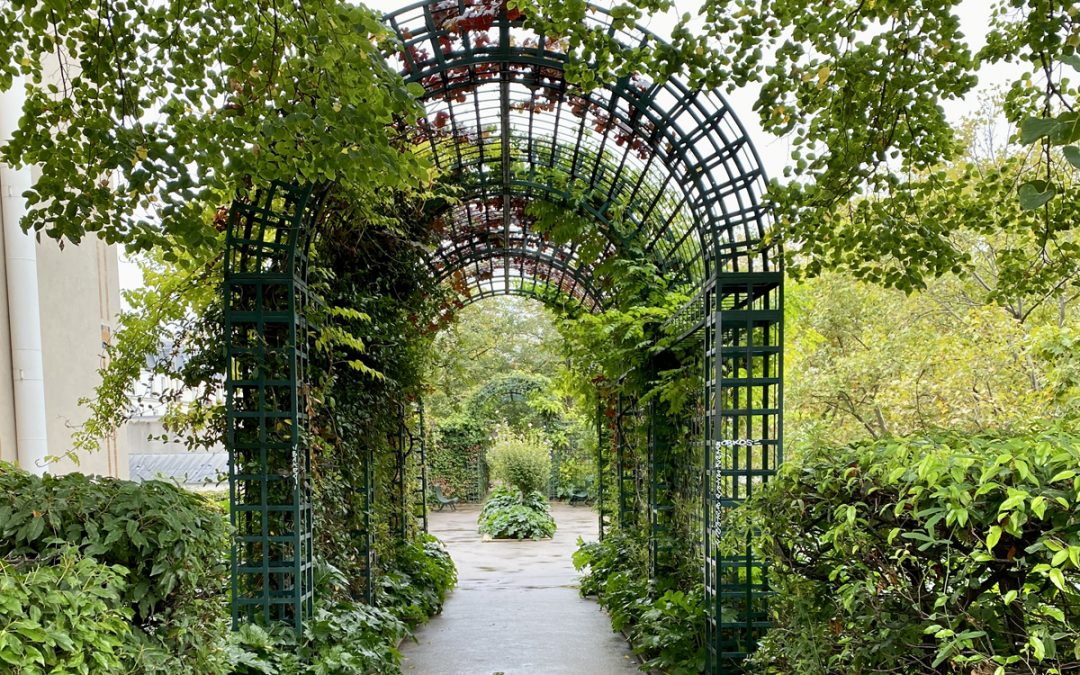I thought it was timely to reflect on our last trip away in 2022.
All in the cause of millinery research – in early October, we took our first journey on a plane since the pandemic, spending a couple weeks in France. One morning walking through the Place Saint-Sulpice in central Paris, we came across a vintage antique market – and I could not resist this Japanese-sourced vintage headpiece.
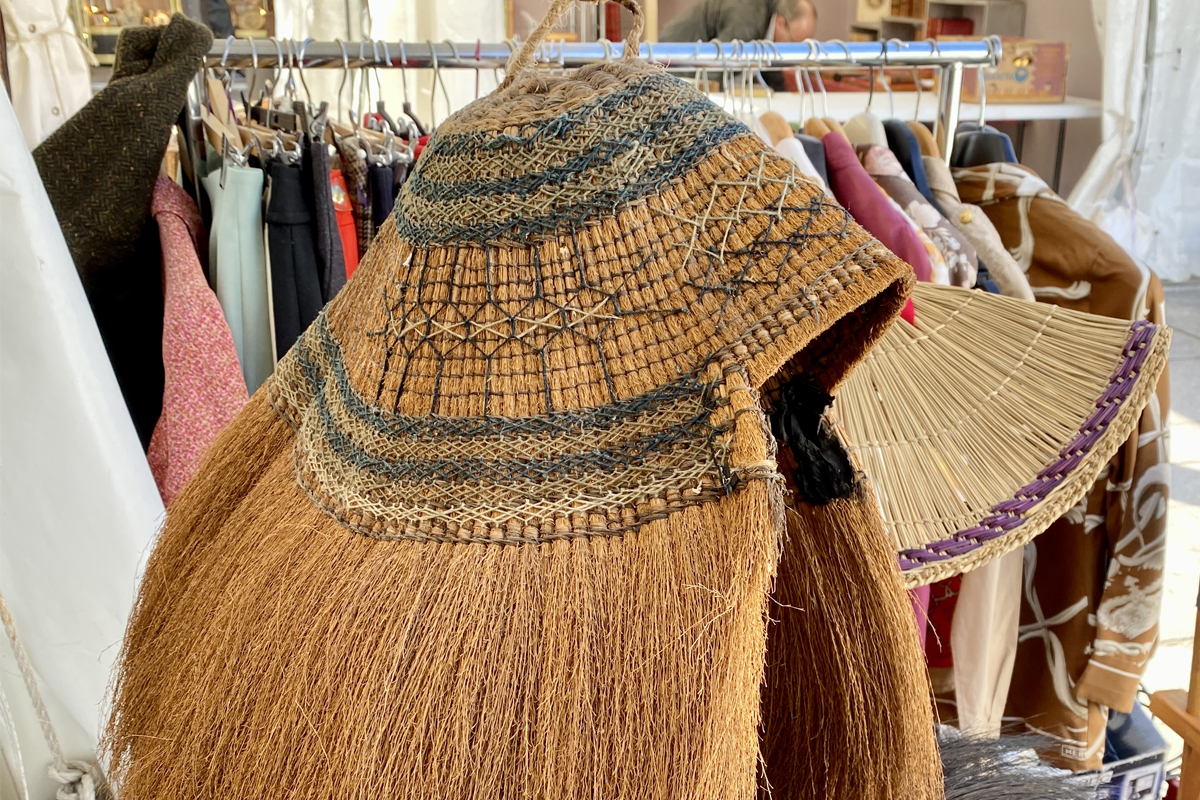
I found gallery inspiration throughout Paris, including this stunning tapestry made from one of the millinery staples – goose biots. The tapestry uses hand-tied boots cut and fringed to create the floral display.
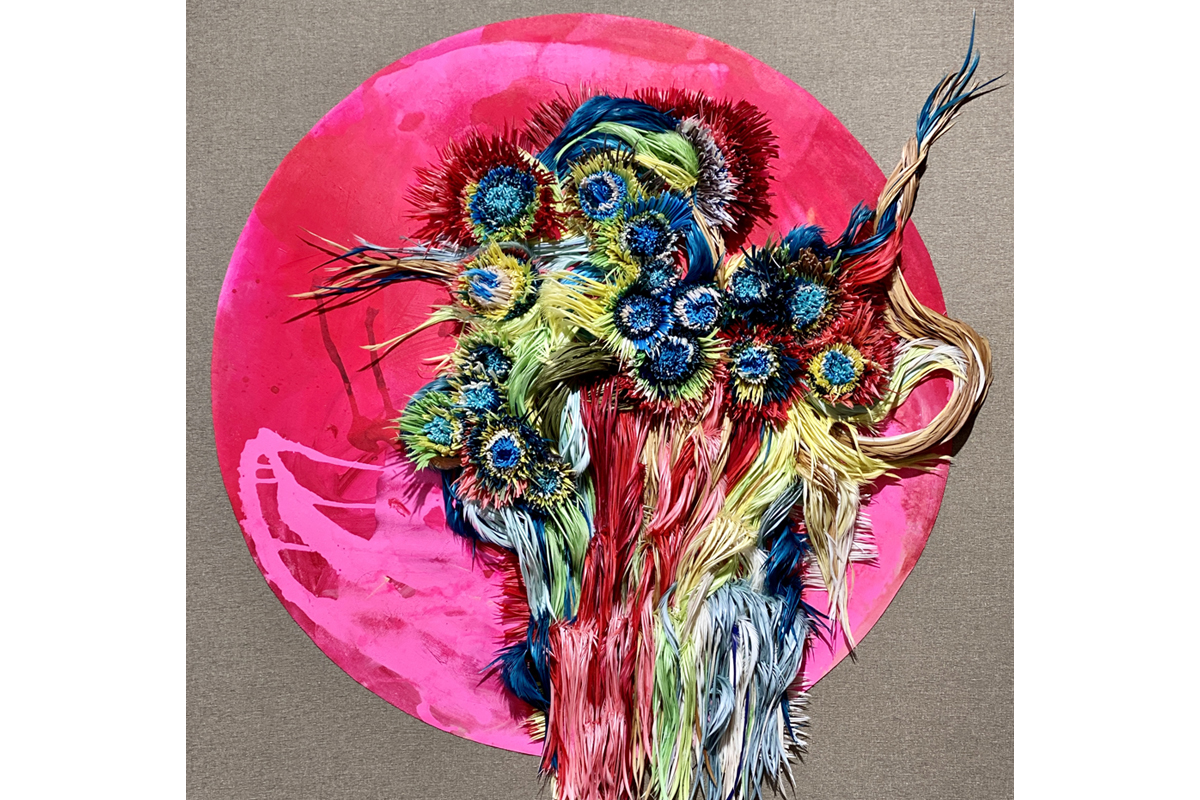
Window shopping, of course, is a constant source of pleasure, as seen in this stunning display in the iconic Repetto ballet shop.
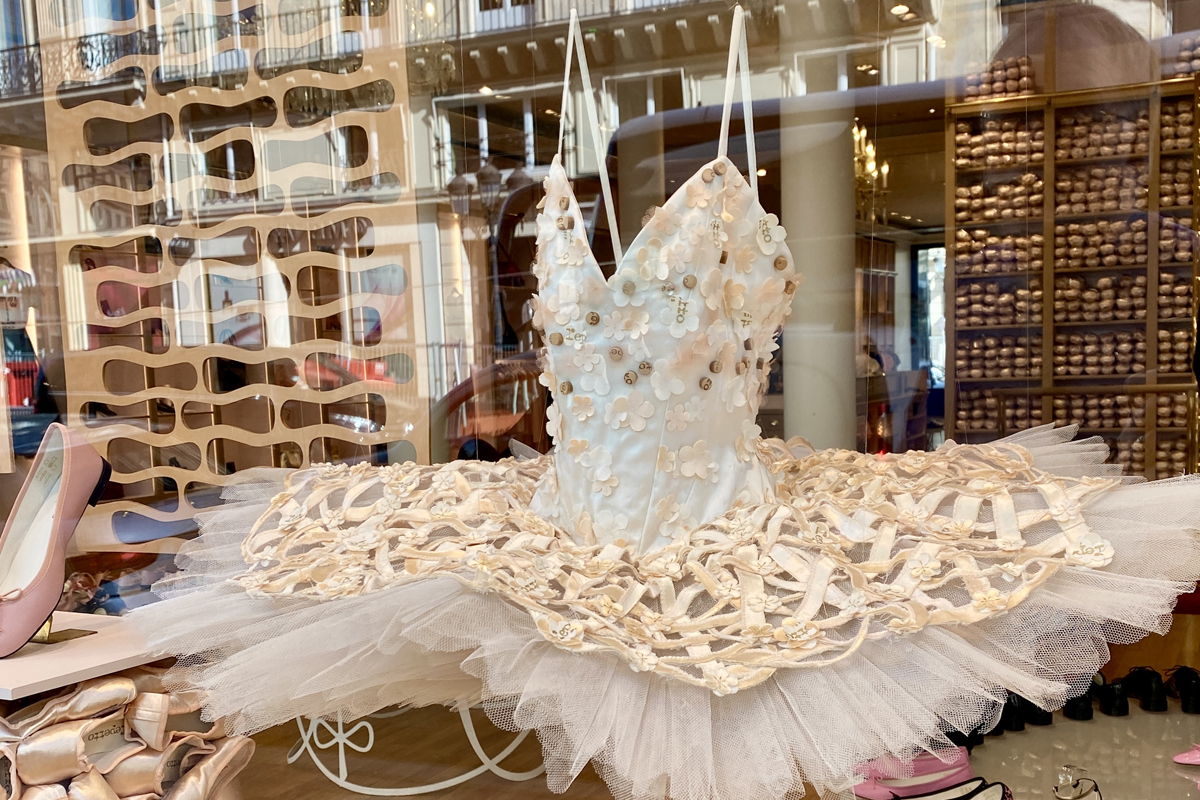
I was never one to miss the opportunity to add to my millinery ‘stash’ I was impressed by the selection of haberdashery stores, too, and came home with a small selection, including my favourite lime greens, of course.
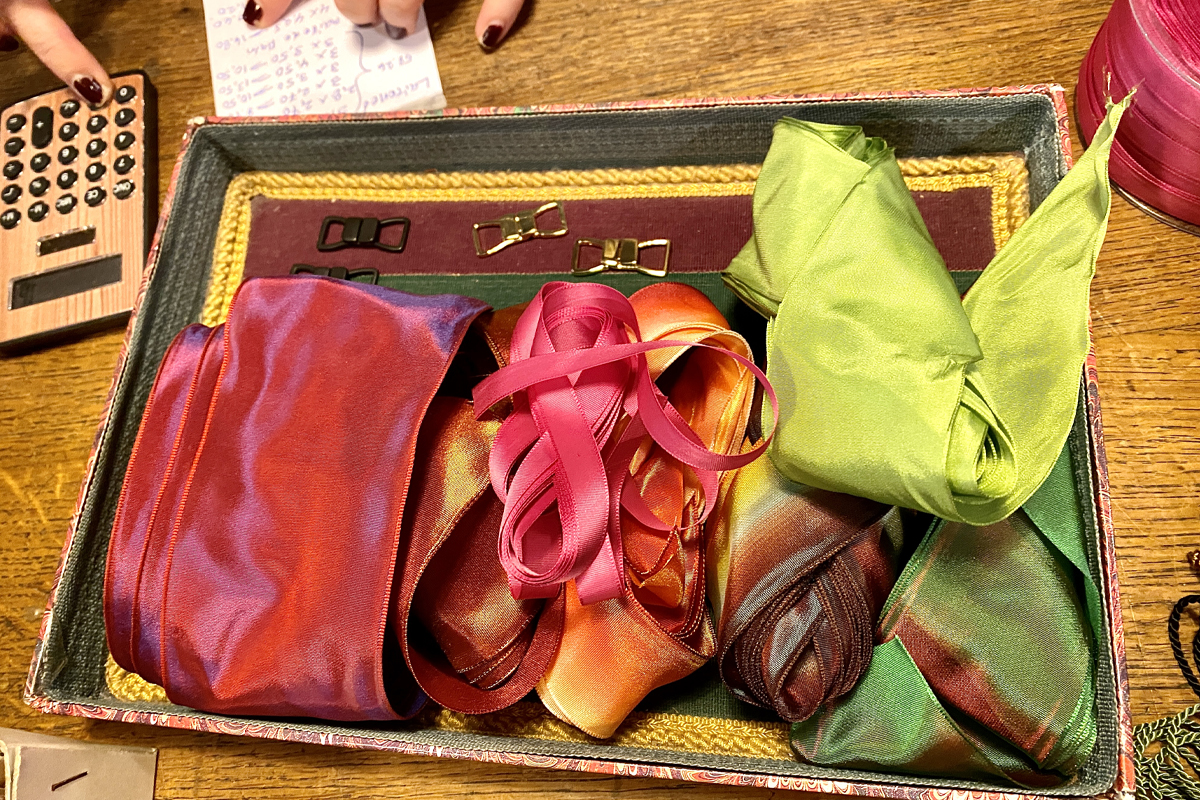
Some of the stores had inspirational millinery ateliers too.
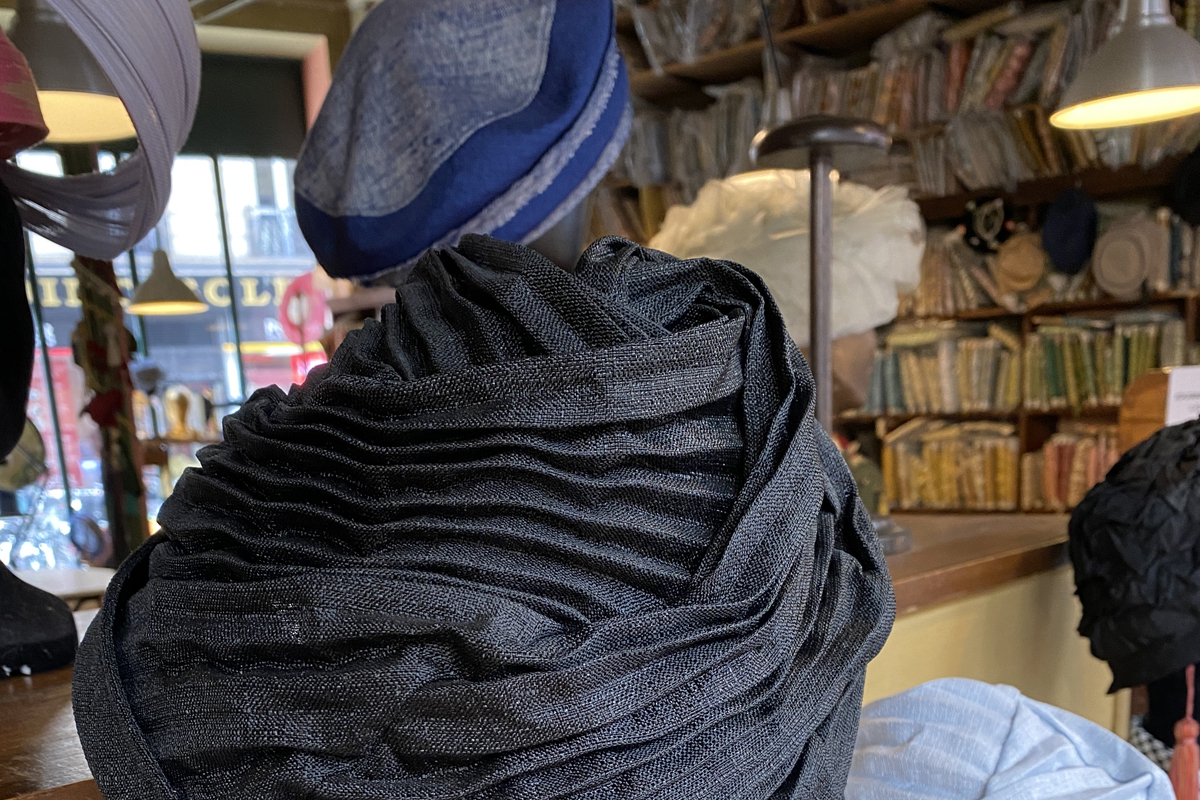
And, of course, we took in our fair share of museums. We enjoyed the Museum Carnavalet the Le Marais particularly – it is always fun looking at images that include millinery.
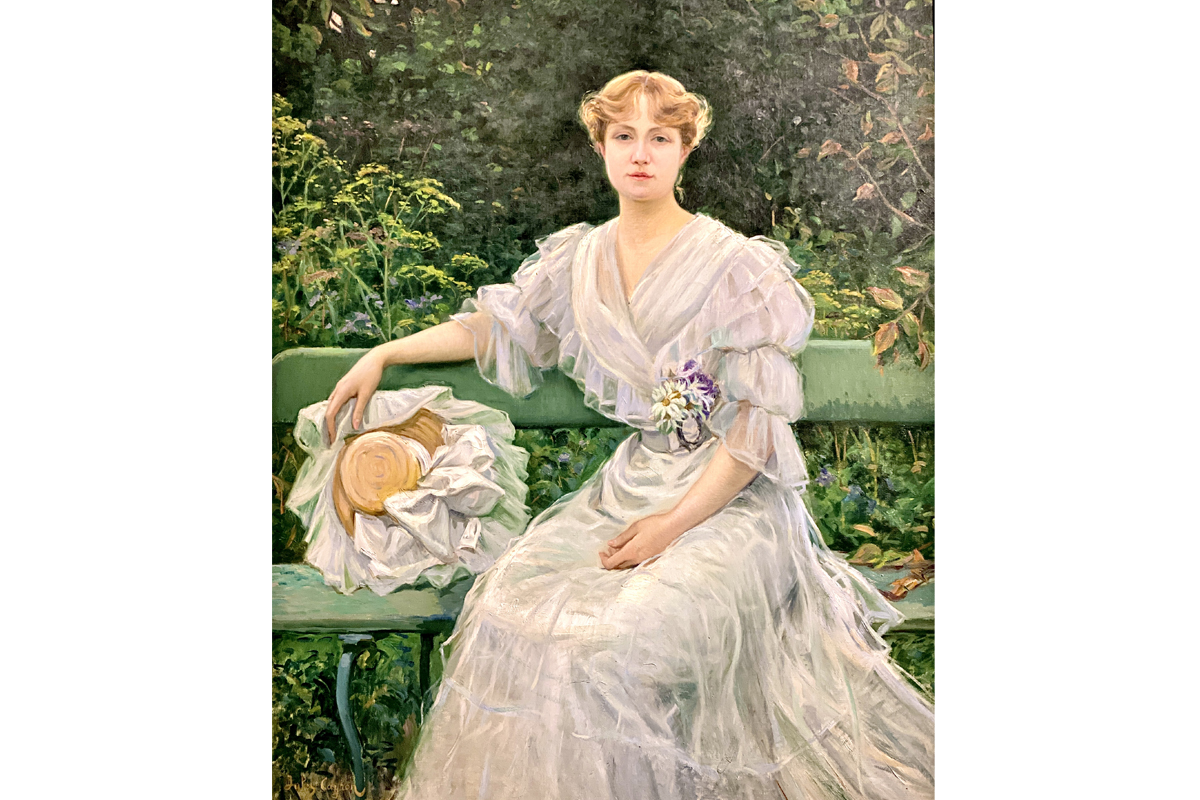
On our final evening in Paris, there was stunning sunset from our hotel bedroom, and after a few days in Paris, it was time to move on.
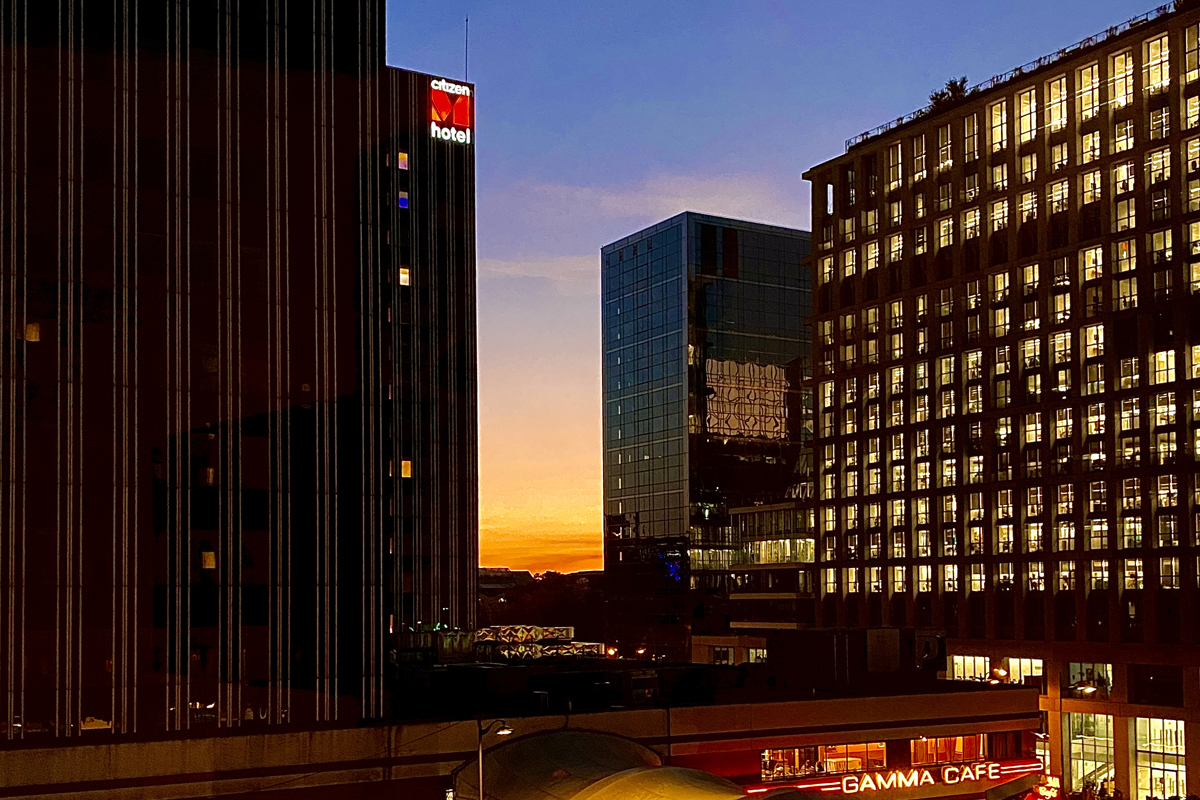
We travelled from Paris to Sete by TGV on the highly efficient and well-run TGV, hurtling south towards Sete in the Languedoc-Rossillon region, where we caught a barge and travelled along the etangs to Arles.
So it was that after a delightful evening spent at the local Sete oyster festival, we returned to the boat and viewed our immediate next-door neighbours, of which this one was a prime example!
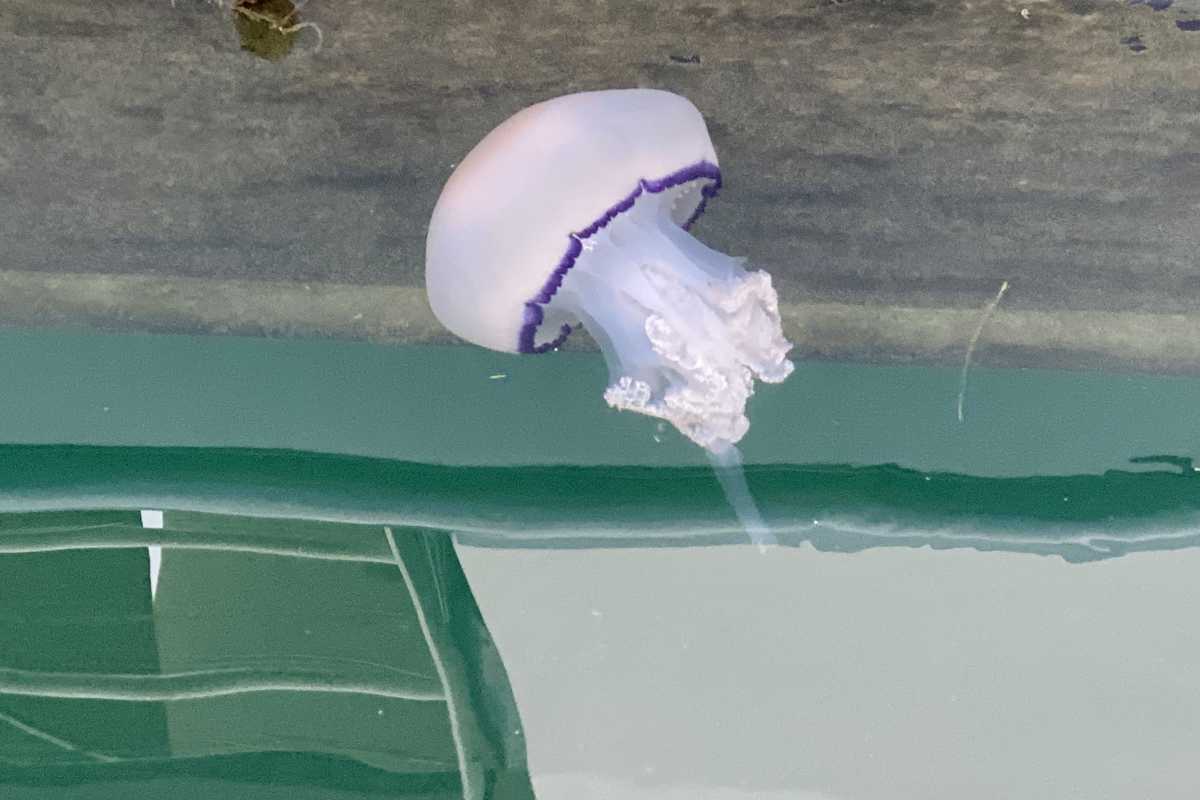
At Port de Bouzigues, we took in the local fishing museum with its contemporary collages of traditional fishing life and sampled some more oysters!
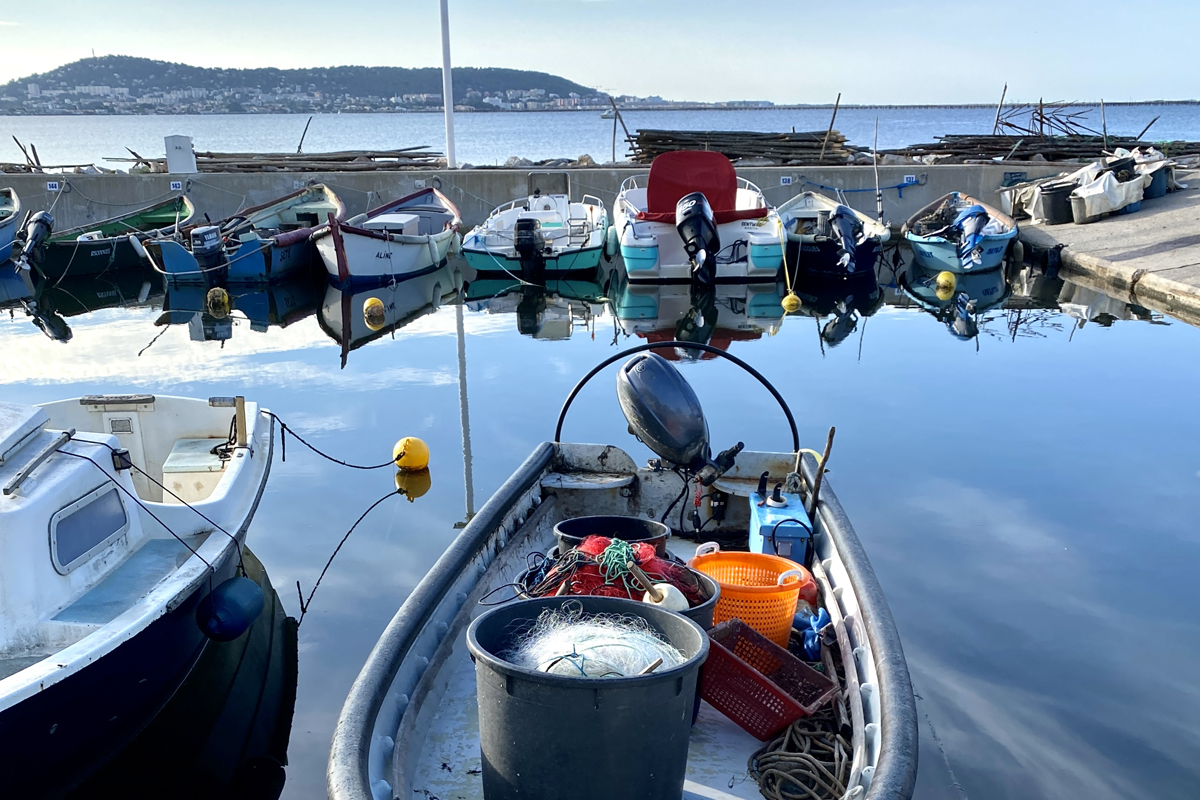
Moving on, we spent the afternoon exploring the narrow streets of the medieval village of Saint-Guilhem-le-Desert, with its charming stone buildings, narrow streets and impressive church.
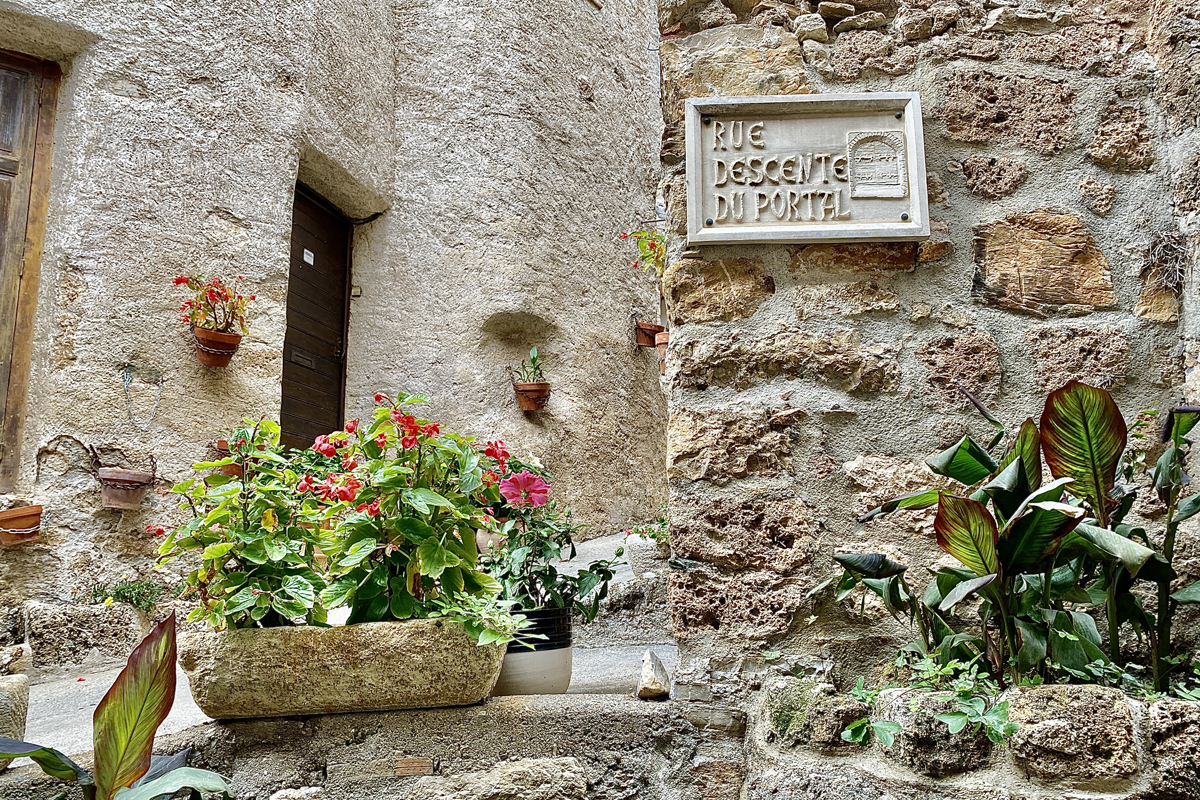
Returning to the boat, we continued sailing along the waterways parallel to the etangs in the direction of Aigue-Mortes.
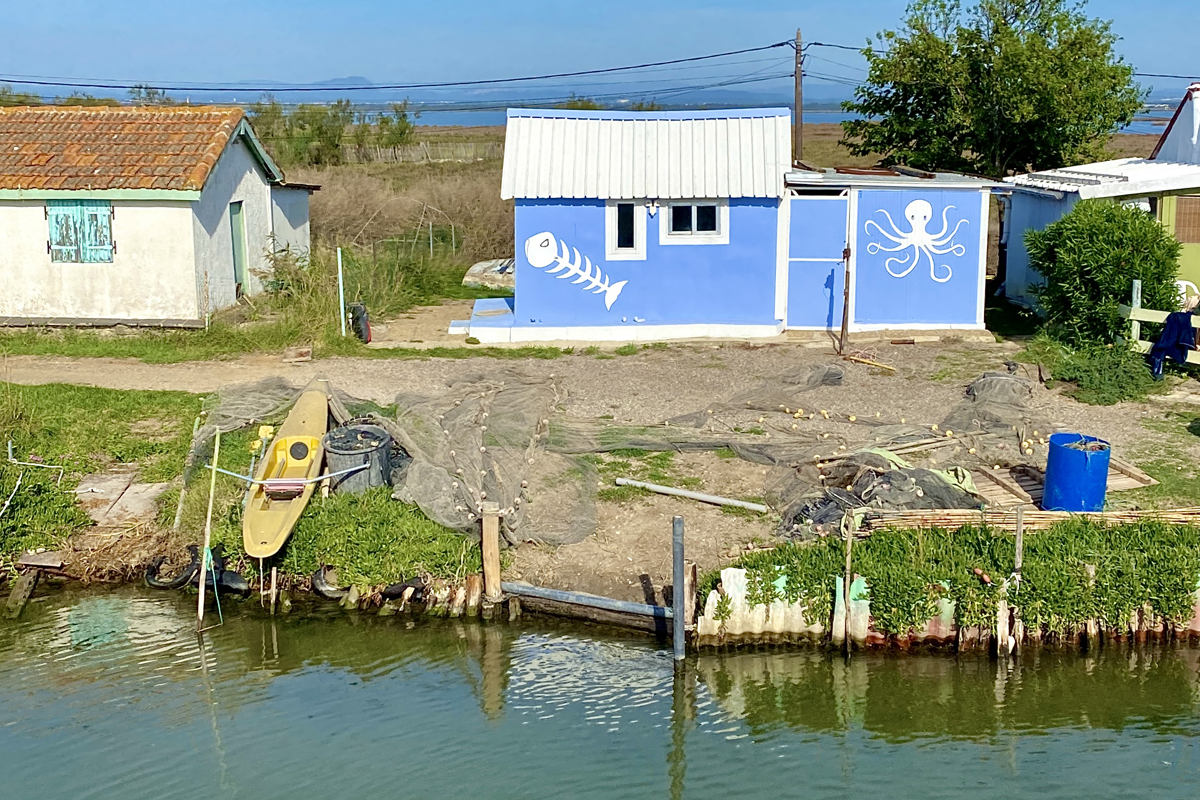
Aigue-Mortes is a small, fortified, medieval city in the Camargue with stunning ramparts and famous ‘pink’ salt flats. Salt has been harvested at Aigues-Mortes since Roman times whilst the operation is now completely mechanised. As the flats are known, the salt pans supply much of Europe’s quality sea salt for the food trade.
The area is noted for its pink water – caused by the pink algae that live in it. The tiny shrimps that live in the pink water are also pink – and eating them makes the area’s flamingoes turn pink too! Nature’s food chain at its best!

The salt pans are located in the Parc Naturel Régional de Camargue, a federally protected nature park. The park’s primary mission is to preserve the natural environment that still exists in the Camargue area and its Etangs.
As you can see, the views from the boat as we sailed through Etangs were stunning, and the contrast with our last notable sunset was quite marked!
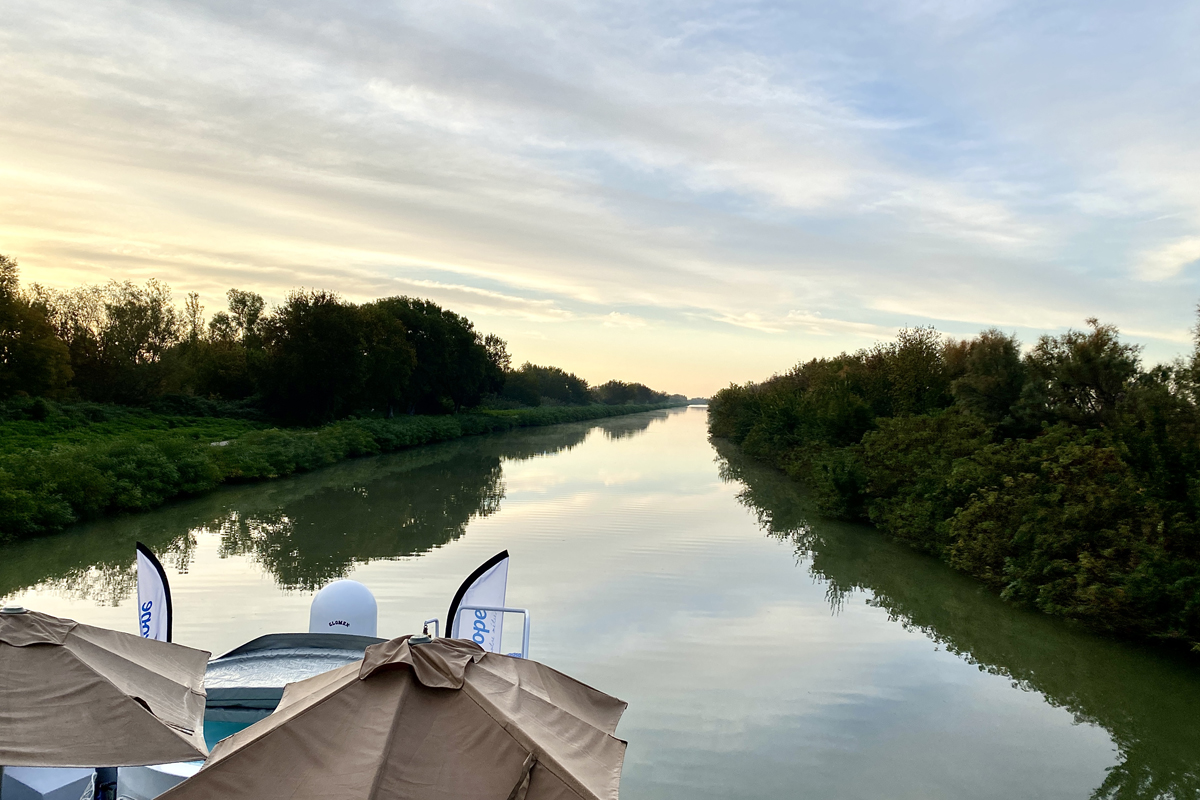
We had been reminded of Vincent Van Gogh and his connection with the area when we visited Saintes-Maries-de-la-Mer, earlier in our trip. Still, reaching Arles, we were immediately immersed in Van Gogh’s imagery.
This vibrantly painted cafe in Arles romances the iconic colour palette of Van Gogh, of course, and reminded me of the fundraiser I ran earlier in the year when I used similar colour felt to create a campaign for DECT (Disasters Emergency Fund) in aid of Ukraine.
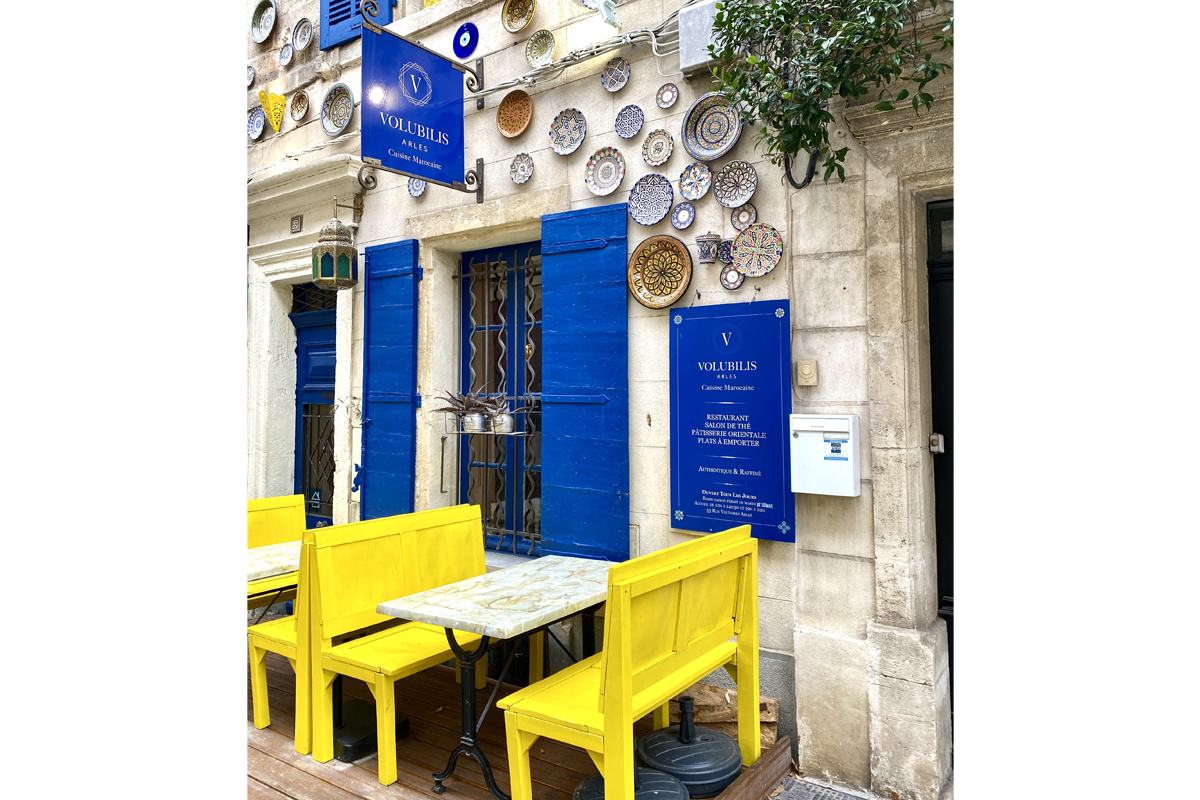
To mark the anniversary of the start of the war in Ukraine, unless peace is declared in the meantime, I will be making and releasing more Ukraine felt sunflowers for March 2023 and taking pre-orders via my website from 16 February – 16 March. Profits will be donated, as before, to the Disasters Emergency Fund.
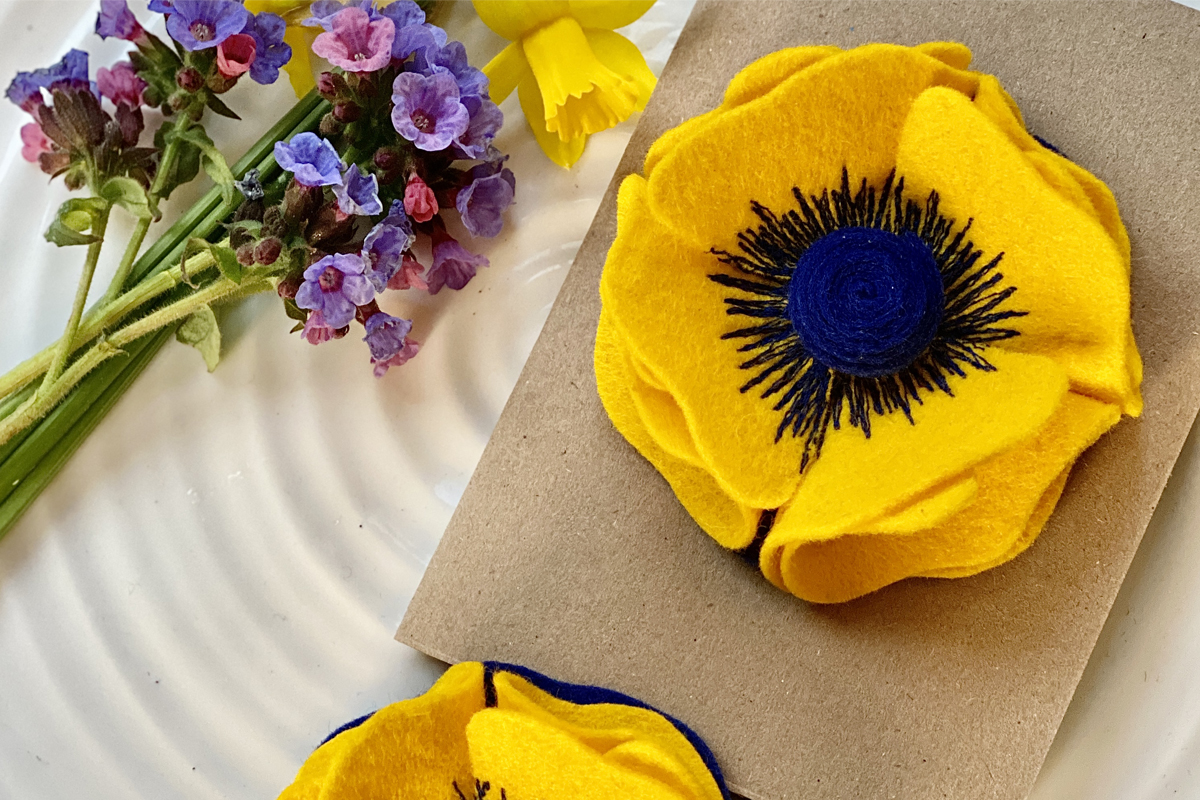
The shopping in Arles was fabulous – for instance, opposite the Theatre Antique, I spotted the most gorgeous artisan store – Carnet de Voyage – with their incredible display of ceramic guinea fowl. All in all, we can’t wait to return to the area!
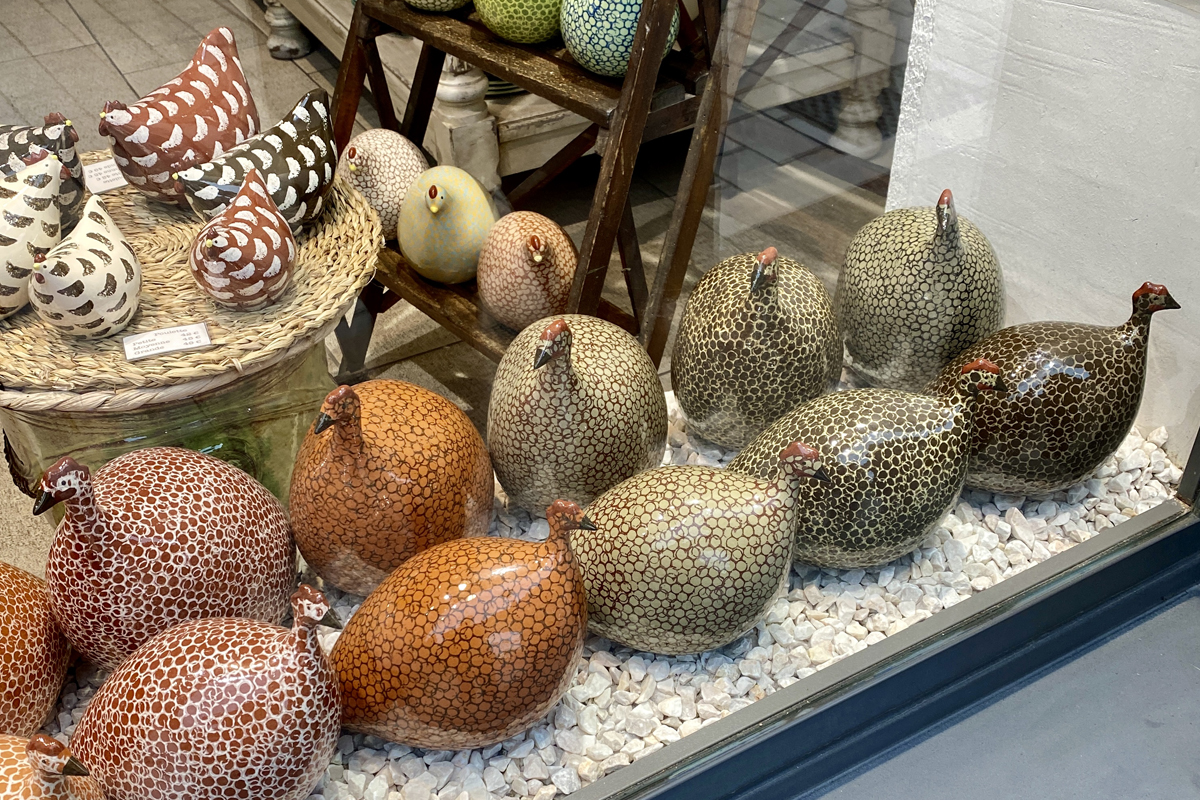
Back in the centre of Paris with a few hours to fill in before our flight home, we savoured our last few hours in France as we strolled along a suburban walkway garden, the Promenade plantee. The 4.5km green corridor was created along the path of a disused railway line and is Europe’s only elevated park.
Till the next time, Paris.

